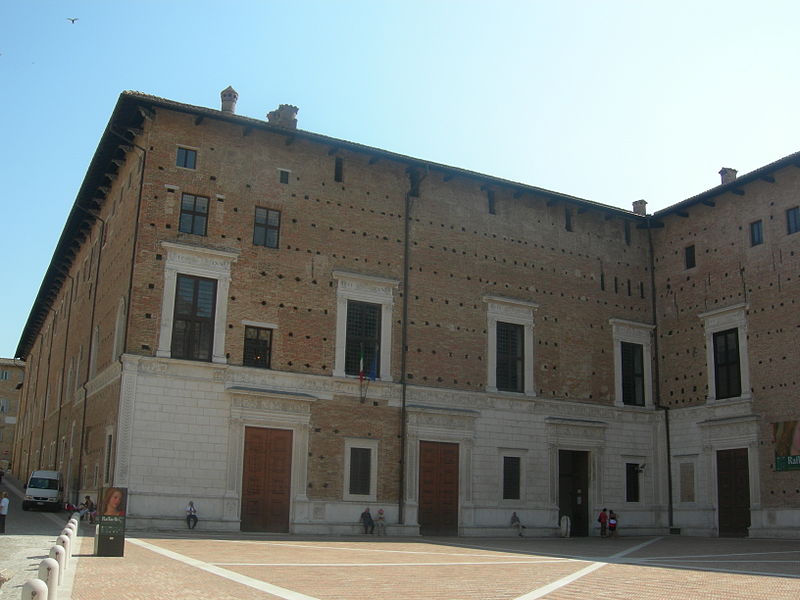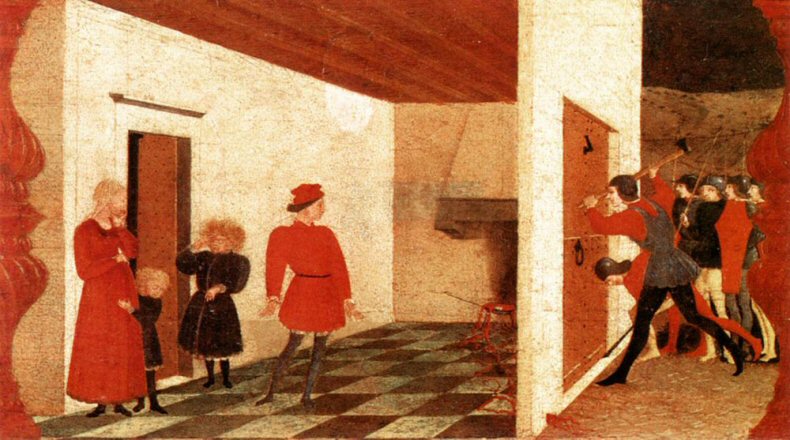
The first traces of a Jewish presence in Urbino date to the fourteenth century, when Daniel of Viterbo received authorization to work as a banker and merchant. The Jewish community prospered under the liberal regime of Duke Federigo da Montrefeltro (1444-82), who was interested in Jewish culture and collected Hebrew manuscripts. This situation changed when the duchy came over the authority of the Della Rovere family in 1508 and was subsequently incorporated into the Papal States in 1631. Its ghetto had been established in 1570. In the eighteenth century, the community became considerably poorer. The arrival of Napoleon’s armies brought Jews their freedom, but the troops’ departure was followed in 1798 by anti-Jewish demonstrations. The discrimination disappeared only in 1861 with the incorporation into the kingdom of Italy.
The synagogue is located in the former ghetto. It dates from 1633-34 and was restored in 1848. The prayer hall is located on the second floor of this edifice. The decorated aron kodesh and the tevah face each other and are well preserved. The furnishings and the prayer books are still in evidence.

The famous six-panel series The Legend of the Profanation of the Host painted in 1465-69 by Paolo Uccelo is located at the National Gallery of the Marches (Galleria Nazionale delle Marche). It depicts a Christian woman bringing a communion wafer to a Jewish moneylender as a guarantee on her loan, only to have him throw it into the flames. The blood dripping from the host informs the population about the sacrilege. The woman is condemned to be hanged but pardoned at the last moment, while the Jewish moneylender and his entire family are burned at the stake.